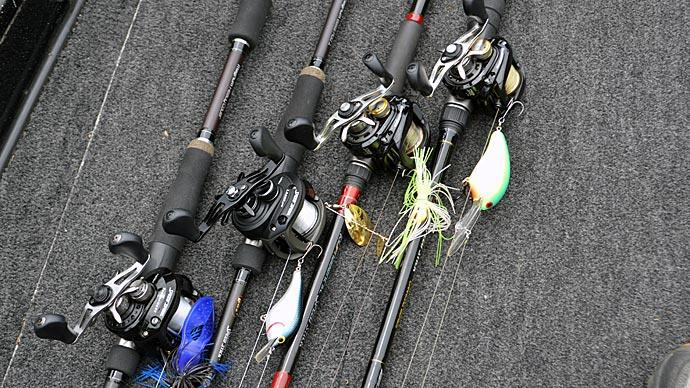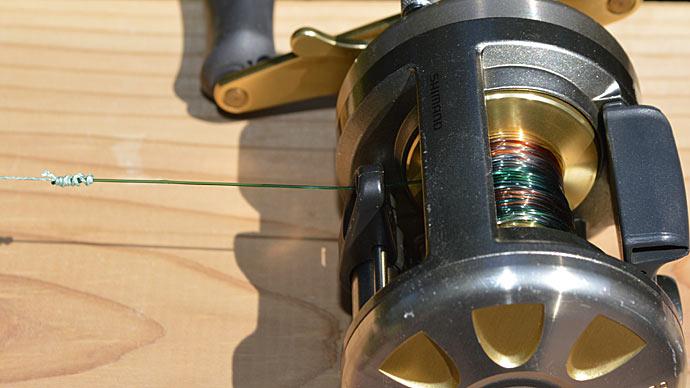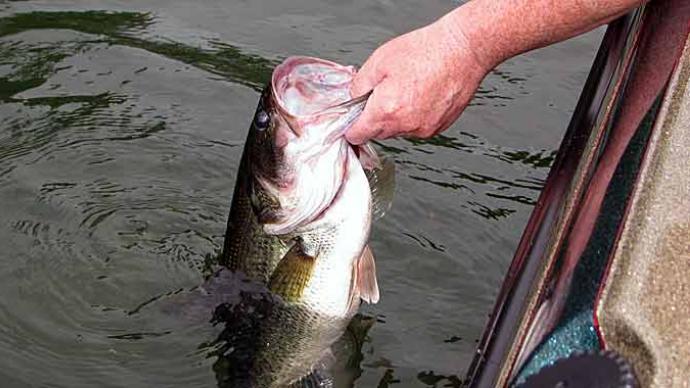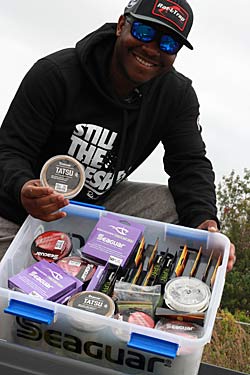
It has been said that the fishing line is the most crucial piece of equipment in fishing. After all, it is the thing that connects an angler to a fish on the end of the line. Fishing line can be the difference between landing a trophy fish or having a story about the one that got away at the end of the day.
Choosing a quality line is one way to put the odds in your favor, but the line type and size you select are also vital as they can significantly affect how your lure acts under the surface.
Here are some things to consider when choosing the right line for the job.
Diving Depth
One of the most significant ways that different fishing lines can affect a lure is diving depth for crankbaits and jerkbaits. Upsizing or downsizing one size can impact how deep a lure will dive and how quickly it will reach the maximum depth.
A 12-pound test fluorocarbon is a good starting point for crankbaits and one of the most commonly used line sizes. Dropping to a 10-pound test will allow your bait to dive slightly deeper (and get there quicker), and moving up to a 15-pound line will cause the bait to dive shallower. One of the factors to consider is the cover in the area you are fishing and the size of the fish you are catching.
There are other instances where limiting the diving depth of a crankbait or jerkbait is done on purpose, such as fishing shallow crankbaits around wood cover. Using a heavier pound test line will keep the bait from getting snagged as much. Subtle changes to line size can make a big difference in getting more bites and is something to experiment with when on the water.
Jerkbaits are like crankbaits, as line size plays a big role in how the bait acts. In addition to diving depth, the bait's action will also vary. Generally, the thicker line will slow the action as the bait darts from side to side. A lighter line will give the bait a more erratic and free-flowing movement through the water. Again, adjusting something as simple as line size can pay big dividends in how your lure performs.
Braid to Fluorocarbon
One of the biggest trends over the past decade is a braided line with a fluorocarbon leader. This combination has countless benefits, notably on spinning gear, as anglers can get the best of both worlds.

The strength, manageability, and casting distance of braided lines are big benefits, and the fluorocarbon's invisibility rounds out the package. It is no wonder that it has become the go-to way to fish finesse techniques on spinning gear as the braid's performance to fluorocarbon has helped anglers be more efficient on the water.
Those are the benefits of using this combination, but it is important to note that some techniques will also affect your lure action. Small swimbaits and other reaction baits like spybaits will perform differently on braided lines than on fluorocarbon lines. The braided line's floating properties will cause these lures to stay higher in the water column than with a sinking line like fluorocarbon.
This is why two anglers fishing in the same boat with the same lure but different line sizes or types may have different results. There is no correct answer when deciding what kind of line to use for these techniques, but knowing how a lure will perform based on the line type is something to be mindful of.
Choosing a Pound Test
There are many variables in play when selecting the proper pound test. In addition to how a lure will perform, casting distance is another factor to consider. Finding the right balance between performance, action, and ability to land fish is the formula for choosing the correct line for the job.
Generally, finesse fishing techniques are best with line sizes between six and ten-pound tests. Jigs and soft plastics fished on the bottom are often fished with line sizes between twelve and seventeen-pound test.
Heavier cover situations and techniques like flipping and pitching are typically done with 17 to 20-pound fluorocarbon or 50 to 65-pound braided line. These are some general rules, and there are always exceptions to the norm based on different regions or bodies of water.
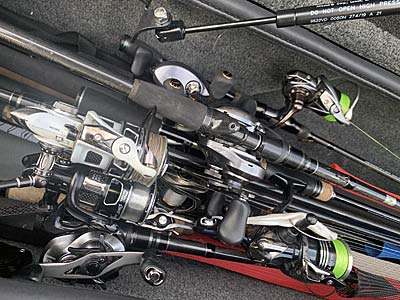
Picking the Right Line Type
Today, the three major line types available to bass anglers are monofilament, braid, and fluorocarbon. Each has its time and place, and properties that make them better.
The fluorocarbon line is nearly invisible and also sinks. This makes it suitable for just about every technique bass anglers use. Monofilament line floats, making it a good choice for topwater lures.
The sheer strength of the braided line makes it a perfect choice for heavy cover. The downside to braid is that it is more visible under the surface, but it can be used for all techniques in dirtier water or thick cover.
Line Diameters Vs. Pound Test
As a final note, the actual diameter of fishing line is essential. If you compare different fishing line brands, keep in mind that the diameters vary significantly between companies. Instead of just comparing the pound test, taking a closer look at the actual diameters is an excellent practice to ensure you get an accurate look at that line.
Choosing the right line is an enormously important part of bass fishing. Knowing when to use different lines comes down to experience and a little experimentation, but picking the right line for the job will make you a better bass angler.


